Renault Kangoo Review 2022MY
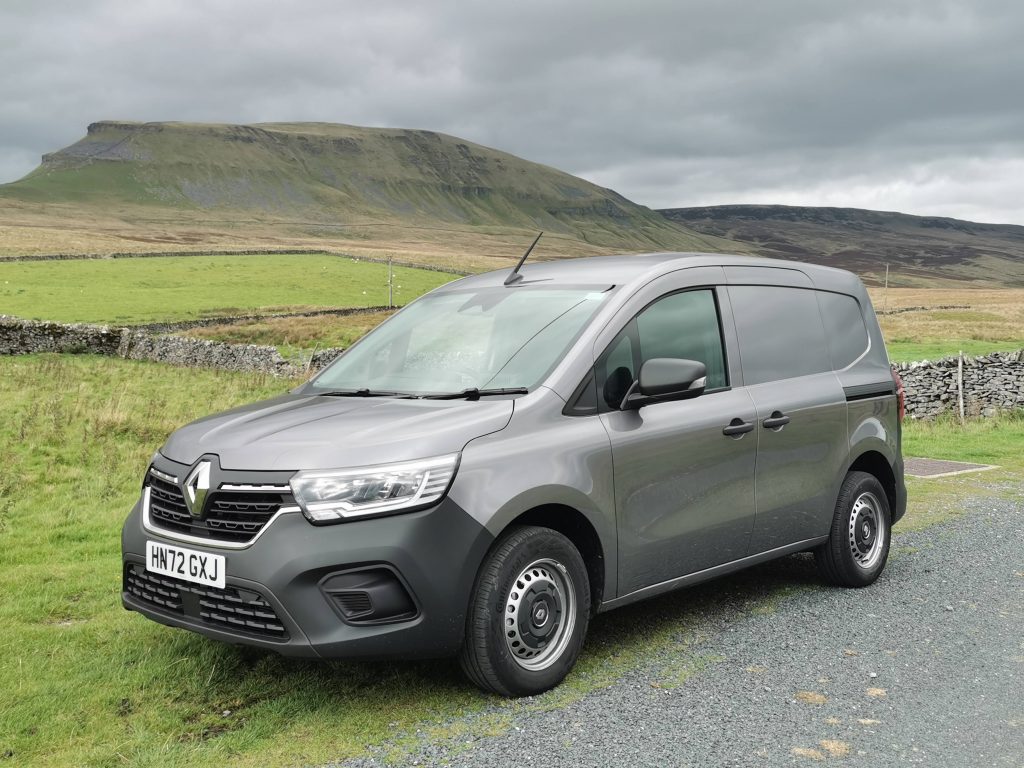
Registrations in the light van sector have been in decline in the UK in recent times, but thriving in an otherwise quiet segment have been the Combo / Berlingo / Partner offerings from the Stellantis group. Renault’s recently launched all new Kangoo van could be about to change that. I’ve recently spent a week with one to see if the International Van of the Year 2022 has what it takes to tackle the dominance of its rivals…
The term ‘all new’ is often overused when it comes to an otherwise facelifted van (or car) for that matter, and a dig under the surface can reveal that there are more than a few links to the model’s predecessor. This doesn’t appear to be the case though with the new Kangoo, Renault having taken a clean sheet of paper when designing the successor to this very popular van.
There are just two body derivatives, designated ML and LL, the longer LL also being offered as a crewvan. Four power units, and two trim levels (but with a healthy option list) mean that there’s a fair few permutations to choose from.
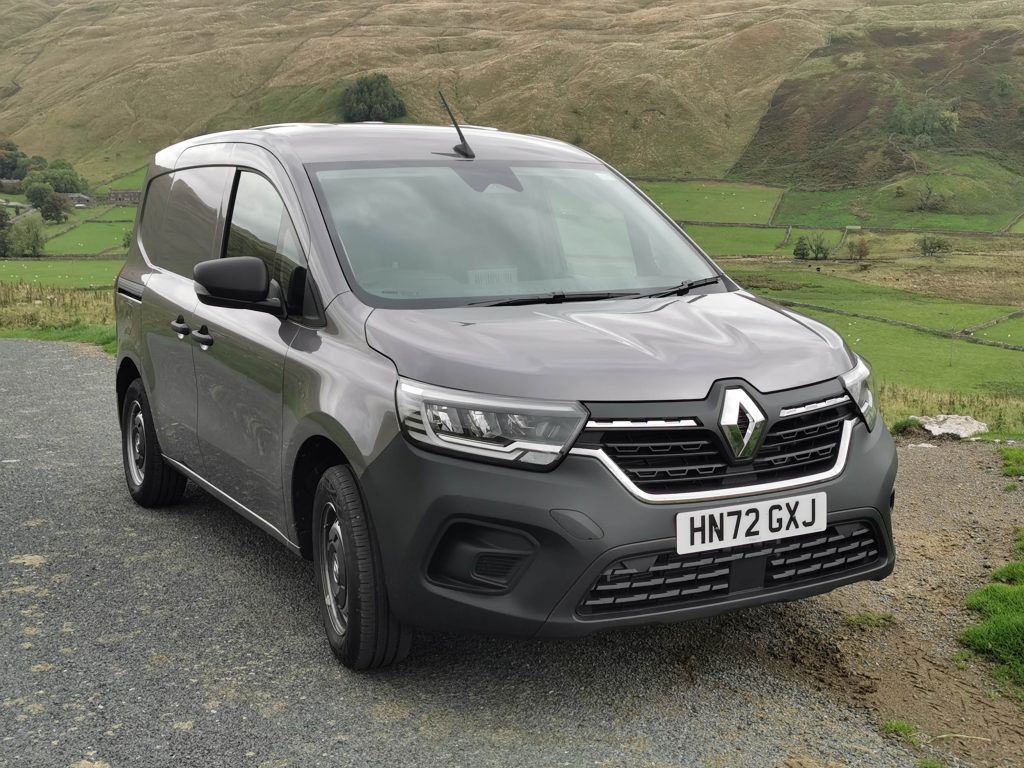
On the Outside
It’s always a challenge for a designer to make a van look different from not only the previous version, but also its rivals. There really is only so much that can be done so, naturally, efforts tend to be made on the front where a little creativity can be exercised.
New Kangoo has the now familiar corporate grille as seen on the latest Trafic, integrated with the wrap-around bumper which includes a lower grill section. The headlights are C shaped, again reflecting the brand and Renault has made the bonnet more horizontal, claiming ‘great road presence’ as a result.
It’s a good looking little van, not a head turner, but then few commercial vehicles are. It’s got modern looks which, in my opinion, are not surpassed by anything else on the market.
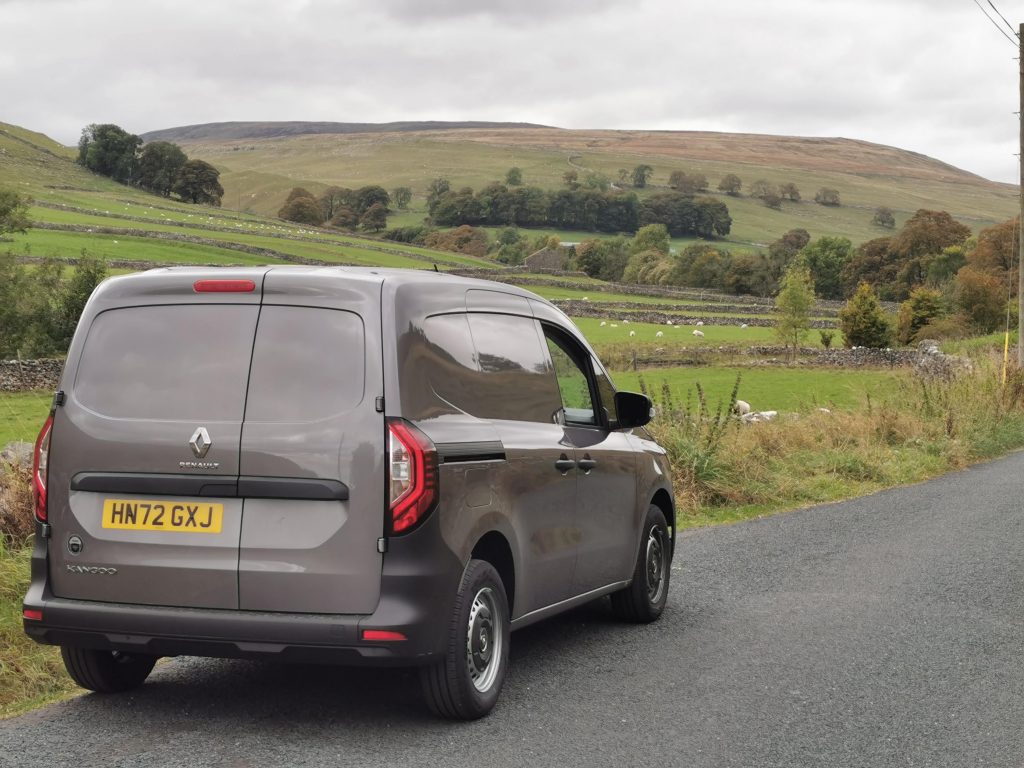
Under the Bonnet
There’s a decent choice of power units on offer. The proven 95PS and 115PS dCi diesel engines are joined by a 100PS petrol unit, and there’s an all electric version too.
The Kangoo platform is being marketed by Mercedes-Benz and Nissan as the Citan and Townstar respectively. There are a number of differences between them but, interestingly, Nissan is not offering a diesel option. It’ll be interesting to see if customer demand (or a lack of it for petrol) sees a review of this policy in the future.
The electric Kangoo E-Tech is technically much improved from the outgoing model, with an increased range, a more powerful 90kW motor (compared to 44kw previously) and larger battery. It has an official WLTP Combined range of 186 miles from its 45kWh battery pack which can be recharged fully in less than 7 hours from a 7.4kWh wallbox. A 22kWh DC public chargepoint will have you back up to 80% in around 90 minutes.
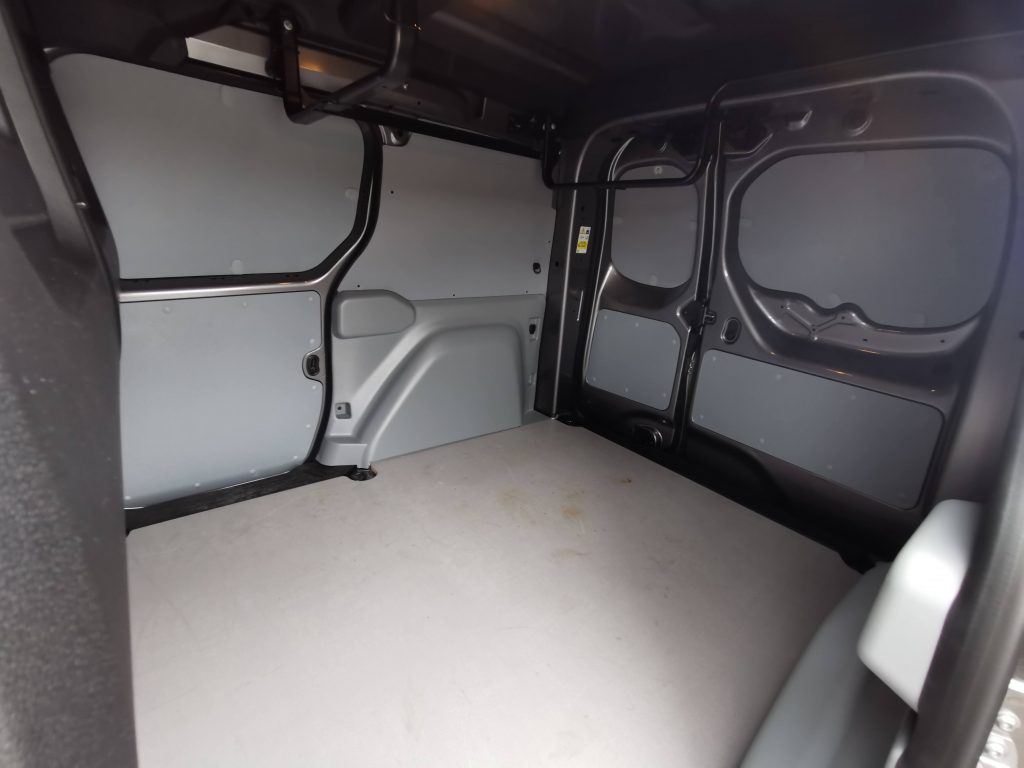
Loads and Weights
Accessed from both twin rear and side loading doors, the load lengths are 1806mm and 2230mm for the two bodies, and this equates to volumes of 3.3 and 4.2 cubic metres, and payloads are up to a healthy and competitive 987kg for the diesel versions. These are all significant improvements over the outgoing Kangoo, with load lengths increased by 300mm and some additional width between the wheelarches.
The test van was fitted with the ingenious optional Easy Inside rack. Two brackets can be lowered from the roof inside the loadspace, and 2.5 metre long articles can be fed through them into a cavity above the driver. I tried it, and it works well, although you really need to secure the items so that the rear doors are not damaged with the load moving backwards under acceleration. It keeps the loadfloor clear of the obstruction when a more traditional load through bulkhead facility is used, and it can carry items which may otherwise have been stored on a fuel consuming roof rack.
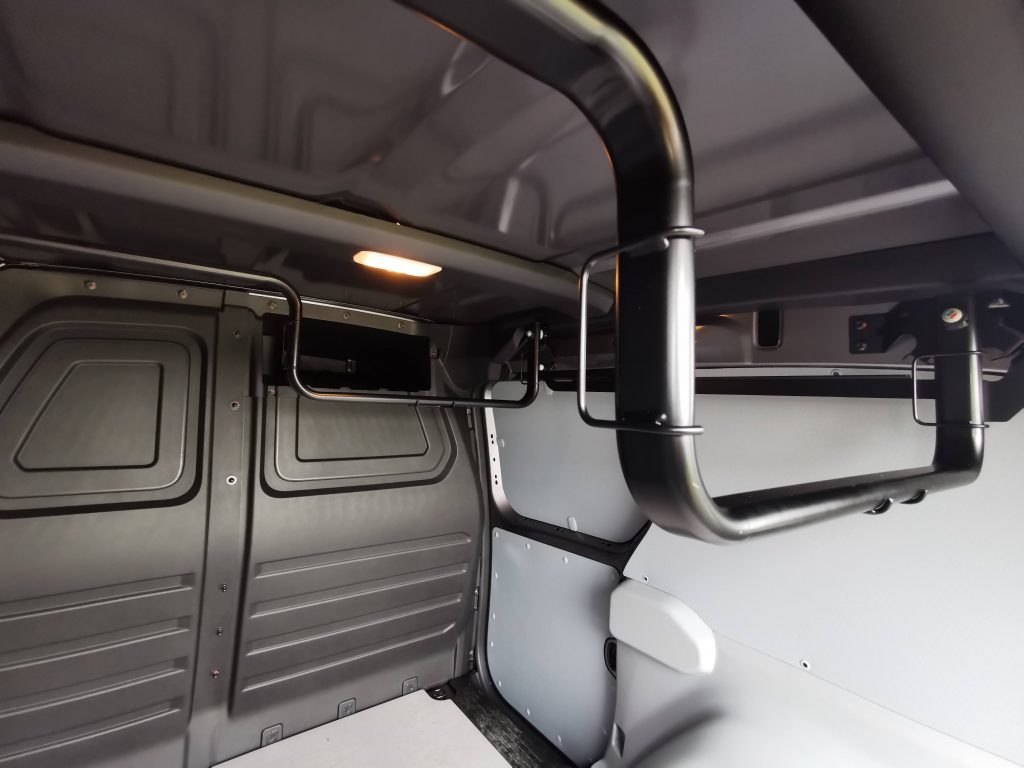
Cab Environment
The cab is significantly more spacious than that in the old Kangoo, and, as is now typical with the latest Renault van products, it’s neat and functional. The deep dash leads to a low windscreen line (giving great visibility) and has a storage compartment and a tray on the top. A lidded glovebox and some fairly modest door bins are on offer, and between the seats there’s a deep box which has a cushioned lid, doubling up as an armrest.
On the higher trim model, the multimedia screen is present, angled slightly towards the driver and the instrument panel is clear with a centrally mounted trip computer. The multifunction steering wheel has controls for the majority of functions, allowing the driver to keep their hands on the wheel.
The test van was the more basic model, which doesn’t include the bench passenger seat which allows for three people to be accomodated. As with competitor vans, given the position of the gear lever, I’d suspect that the centrally seated person might find it challenging to get comfortable…
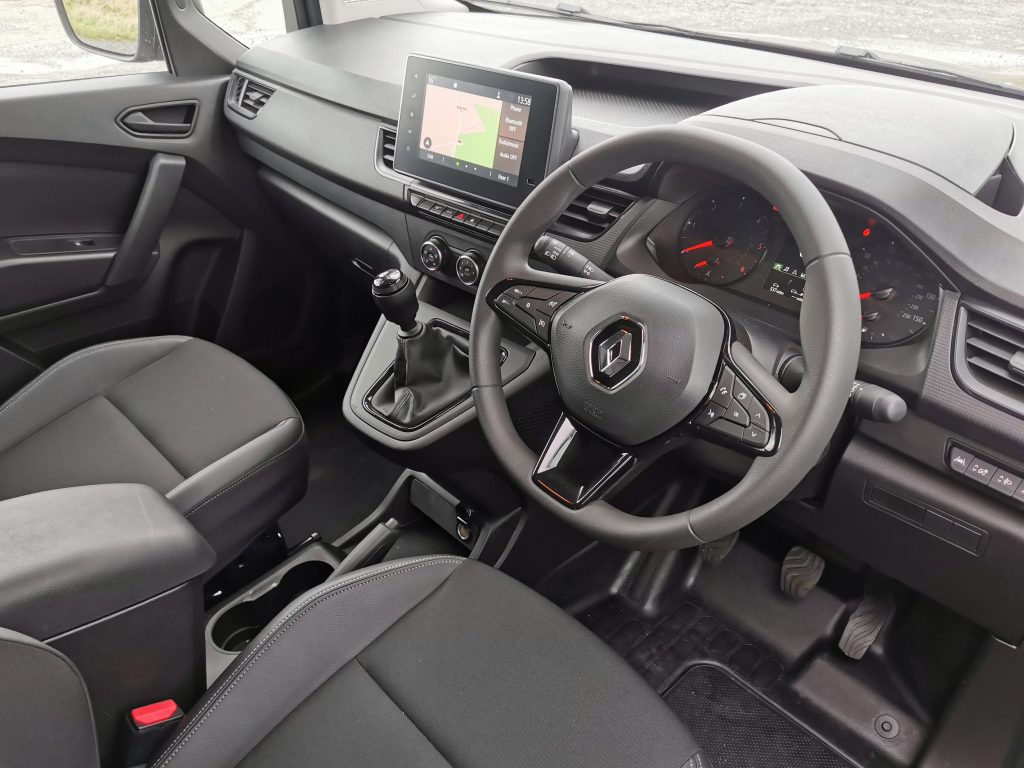
Spec and Tech
A focus for manufacturers these days is to include as many ADAS (Advanced Driver Assistance Systems) features as possible. Renault has really come to the party with the new Kangoo, which has up to 20 different features available, albeit the majority as optional equipment. Active Emergency Braking System, Driver Attention Warning, Lane Keeping Assist, Rear View Assist Distance Warning and Easy Park Assist are just a few of those on offer.
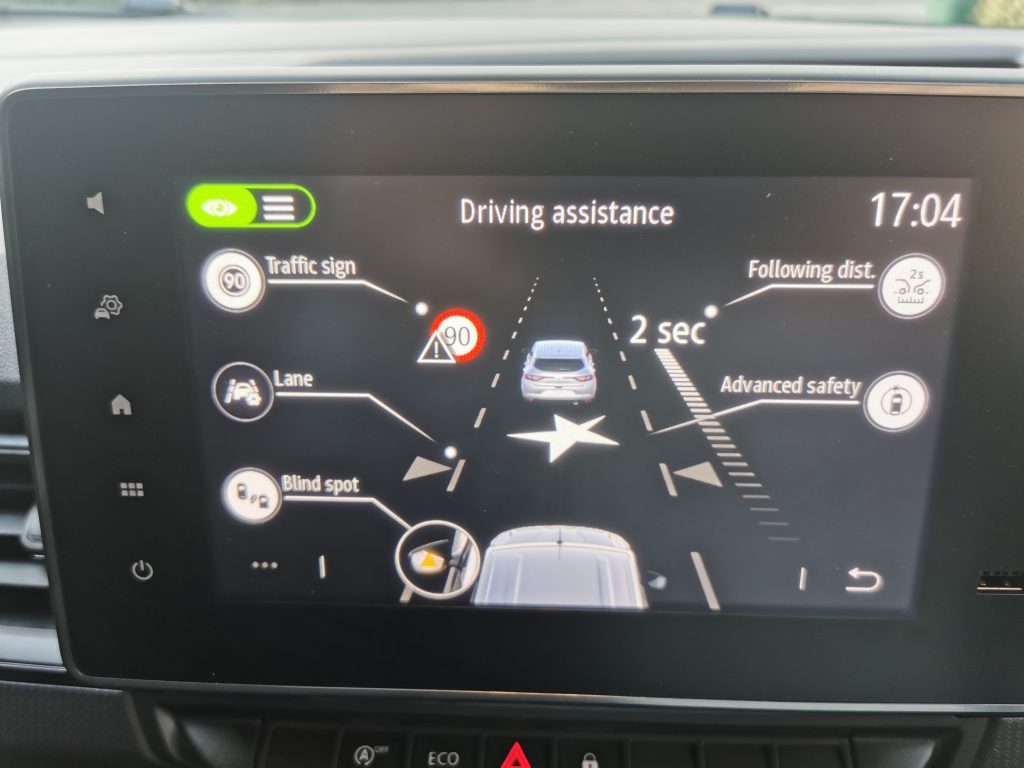
Start and Advance are the two trim levels, with the lead in Start having a DAB radio, but no multimedia screen, just a 3.5” TFT display for radio and bluetooth operation. Air conditioning is generously included, as is cruise control and automatic headlights and wipers.
Advance adds in the 8” touchscreen which includes Android Auto and Apple CarPlay smartphone integration, an electric parking brake, the passenger bench seat, and LED loadspace lighting. Reverse parking sensors are standard, as is an electronic wide rear view mirror and a Thatcham alarm.
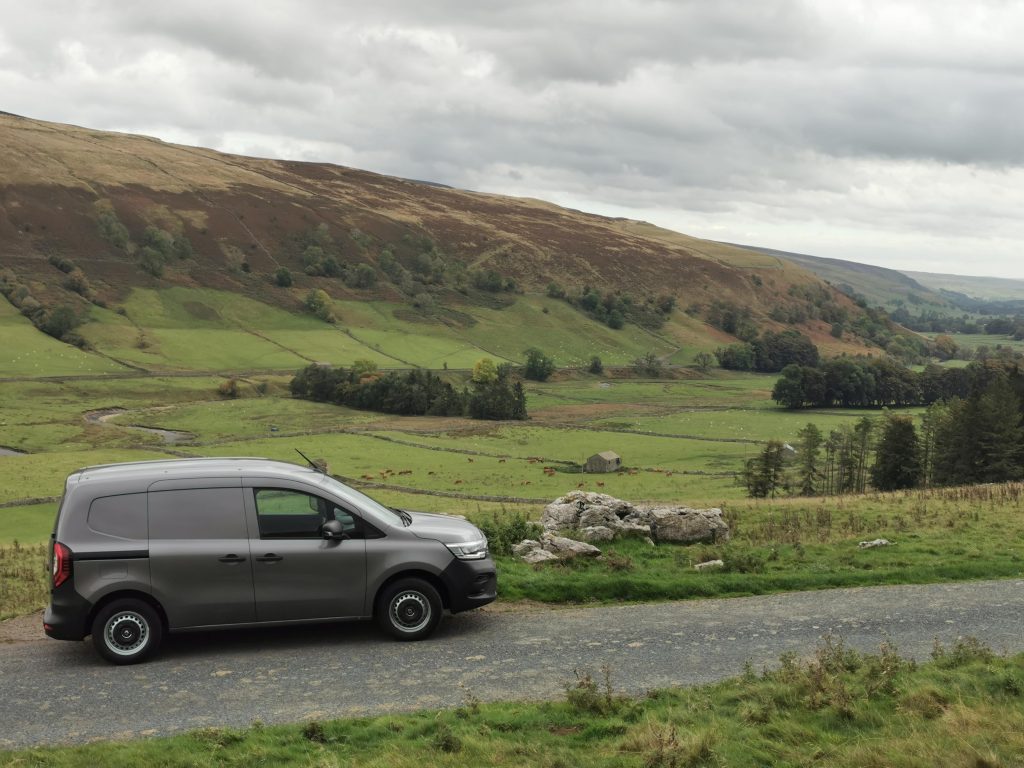
Driving Impressions
My test van was the ML19 model with the 95PS diesel model in Start trim. There were a few options fitted, including the multimedia screen with navigation, parking sensors, interior side panels to the load area, Easy Inside rack, metallic paint and some ADAS features.
The driving position was almost perfect, once everything was adjusted, it just felt right but with one exception. I found the area to rest my left foot next to the clutch pedal difficult to use. It feels to slope toward the pedal, twisting the foot slightly so I ended up resting it on the floor. This wasn’t comfortable and on one long trip my ankle was aching at the end. I’ve not got large feet, so it’ll be interesting to hear how others find this aspect.
The controls are all within easy reach, including those on the touchscreen multimedia unit which was simple to navigate, responding instantly without the lag evident on some systems. There are no issues with visibility, and the large door mirrors allowed for excellent rear vision.
95PS doesn’t sound much these days, but, albeit tested unladen, the van zipped along nicely, with the official 0-62mph time of 13.6 seconds feeling more than adequate. The spacing of the gears seems to be just right and the van was great fun to drive. It handles well, encouraging the driver to chuck it around a little on country roads, the Kangoo holding the road perfectly even when pushed hard.
Ride quality, even unladen is excellent, and Renault need to be praised for minimising noise and vibration, something I also noted when testing the Trafic earlier this year. Intrusion into the cab is minimal, making a long journey much more pleasant and less tiring than in some competitor vehicles.
Although no fuel consumption checks were taken, the trip computer suggested I was averaging in the low 50’s mpg, making the official combined figure of 53.3mpg look pretty accurate.
Summary.
This is a great little van. Build quality is at least as good as anything else on the market. There’s a good range of power units including electric. It’s a competent load carrier, the cab is comfortable, the driving experience is excellent and with 20 ADAS features to choose from, it’s as safe as they come.
I’d buy one.